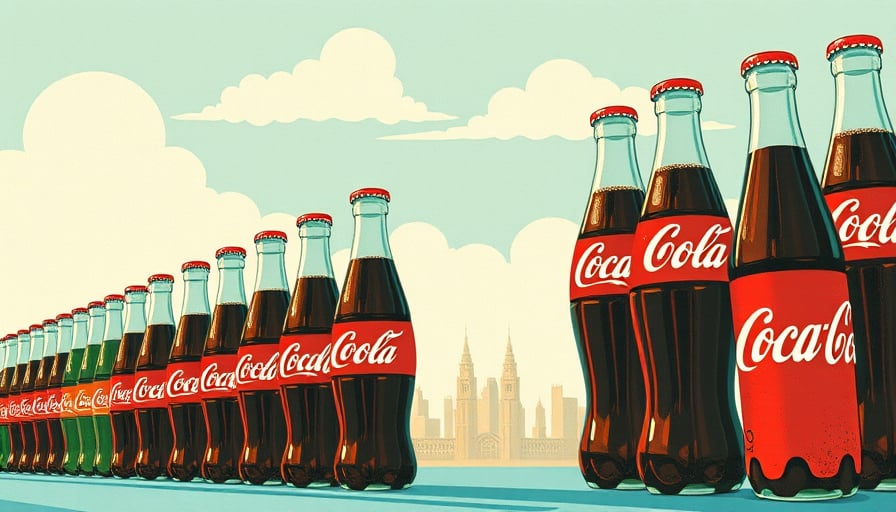Corporate Analysis: Coca‑Cola Shares Trade Amid Mixed Sentiment
On Friday, November 3, shares of The Coca‑Cola Company (ticker: KO) traded within a range that reflected the prevailing market ambivalence. While the company’s long‑term fundamentals appeared unchanged, the day’s movement underscored the nuanced interplay between institutional actions, analyst sentiment, and the broader consumer‑goods environment.
Institutional Investor Actions
A prominent institutional investor disclosed a sizeable divestiture, trimming its stake in Coca‑Cola by approximately 3 % of its holdings. The sale, executed over the course of the trading session, was not accompanied by any commentary from the firm’s board or investor relations team. Market analysts suggest that the move may reflect a portfolio‑rebalancing strategy rather than a fundamental reassessment of Coca‑Cola’s prospects. Historically, similar exits by large shareholders have not precipitated sustained price declines, especially when the company maintains steady dividend payouts and a robust cash‑flow generation profile.
Analyst Coverage
Despite the institutional exit, the majority of equity research reports remain bullish on the beverage giant. Analysts highlighted the following points:
- Dividend Yield: Coca‑Cola’s dividend yield continues to be attractive relative to peers in the consumer‑packaged goods sector, providing a defensive moat in volatile markets.
- Cost Structure: The firm’s diversified product mix—soft‑drink concentrates, syrups, and juice beverages—allows for hedging against commodity price swings. Recent quarterly reports showed a 0.6 % improvement in gross margin attributable to efficient supply‑chain management.
- Global Distribution: An expansive distribution network spanning more than 200 countries underpins the company’s ability to penetrate emerging markets while maintaining premium pricing in developed economies.
These factors reinforce analysts’ confidence in a stable growth trajectory, with earnings per share (EPS) guidance for the upcoming fiscal year remaining unchanged.
Sector Dynamics and Competitive Positioning
The soft‑drink and beverage industry is characterized by high brand loyalty, substantial marketing spend, and significant regulatory scrutiny around sugar content and packaging. Coca‑Cola’s positioning as the industry leader—holding roughly 47 % of the global carbonated beverage market—provides a competitive advantage that is difficult to replicate. The company’s strategy to expand its non‑carbonated portfolio, especially in the health‑conscious segment, aligns with macro‑economic trends that favor lower‑sugar alternatives.
Comparatively, competitors such as PepsiCo and Nestlé are investing heavily in plant‑based beverages and digital marketing initiatives. While these peers are gaining share in niche segments, Coca‑Cola’s broader product breadth and distribution infrastructure keep it ahead in terms of revenue scaling.
Macro‑Economic Context
The broader economic landscape presents both challenges and opportunities for the beverage sector. Inflationary pressures have elevated input costs, yet the demand for consumer staples remains relatively inelastic. Rising disposable incomes in emerging markets continue to drive growth, while tightening regulatory environments—particularly around sugary drink taxes—exert downward pressure on sales volumes. Coca‑Cola’s diversified product portfolio helps mitigate exposure to any single regulatory regime.
Conclusion
On November 3, Coca‑Cola’s share price movement reflected a confluence of institutional divestment and steadfast analyst support. The firm’s enduring fundamentals—anchored by a global distribution network, a diversified product mix, and consistent dividend performance—remain intact. While no material changes to the company’s strategic outlook were disclosed, the market’s response underscores the importance of institutional activity as a barometer for investor confidence. As the beverage industry continues to navigate regulatory, consumer, and macro‑economic shifts, Coca‑Cola’s established competitive positioning suggests resilience and potential for sustained value creation.
